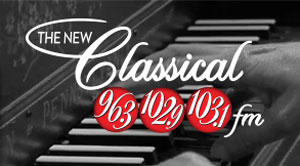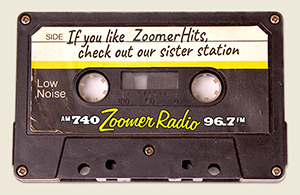The Devil’s Horn
Larry Weinstein, director
David New, editor & co-script w/David Mortin and Michael Segell
The new film about the history of the saxophone, The Devil’s Horn, might have only been of passing interest if it wasn’t for its director, Larry Weinstein. One of Canada’s hidden treasures, Weinstein has directed some of the finest music documentaries in the world. Although his work as an auteur—and I use the word advisedly–isn’t highly recognized, a number of the films he created for Rhombus Media over the decades have won accolades: Ravel’s Brain; September Songs: the Music of Kurt Weill; The Radical Romantic: John Weinzweig, My War Years: Arnold Schoenberg; Solidarity Song: the Hanns Eisler Story; Beethoven’s Hair; and Burnt Toast (with music by Alexina Louie)—to name just some highlights.

With The Devil’s Horn, Weinstein employs techniques that have served him well over the years. He has an eye for quirky individuals and is able to get relaxed, spontaneous interviews from musicians and historians. Here he concentrates on a diverse group of saxophonists: the brilliant octogenarian jazz legend Jimmy Heath; the accomplished Roma musician Yuri Yunakov; the troubled avant-gardist Giuseppi Logan; studio musician Colin Stetson; the gospel playing minister Dr. Vernard Johnson and garage band rocker Rob Lind. They’re all in good form except for Logan, whose story is mainly recounted through some of his friends who are helping out a superb player who has become a street musician.

Contrasting these contemporary tales is the historical account of Antoine-Joseph “Adolphe” Sax, the strange, gifted man who invented the saxophone in 1846. Weinstein and crew are on hand for a celebration of the saxophone and its creator in Belgium—a highlight of the film.
The Devil’s Horn is fun and informative but it is somewhat marred by the decision to make the saxophone a reviled, controversial instrument. David Fox’s narrative voice is set in a tone resembling a B movie actor as Weinstein develops the tale of the sax as a demonic device that has caused harm to jazz musicians and even Sax himself. The fact that the Nazis and one Pope banned it is used to justify the film’s theory, which hearkens back to Michael Segell’s source book, and heavily suggests that there may be something in the tales that warn people not to try playing the saxophone.

Clearly, Larry Weinstein is having fun with his own central thesis, which is also built up through archival footage that reminds one of such over-the-top cautionary films as Reefer Madness. That the saxophone is not a “devil’s horn” makes the film a minor achievement. A better story, one feels, could have been developed. Gripes aside, anyone who enjoys stylish docs will find that there’s much to enjoy in Weinstein’s latest, The Devil’s Horn.
Written by Marc Glassman
Adjunct Professor, Ryerson University
Director, Pages UnBound: the festival and series
Editor, POV Magazine
Editor, Montage Magazine
Film Critic, The New Classical FM
Film programmer, Planet in Focus
Tune in to hear Marc Glassman’s Art Reviews
Friday’s at 9:07am on Good Day GTA.











